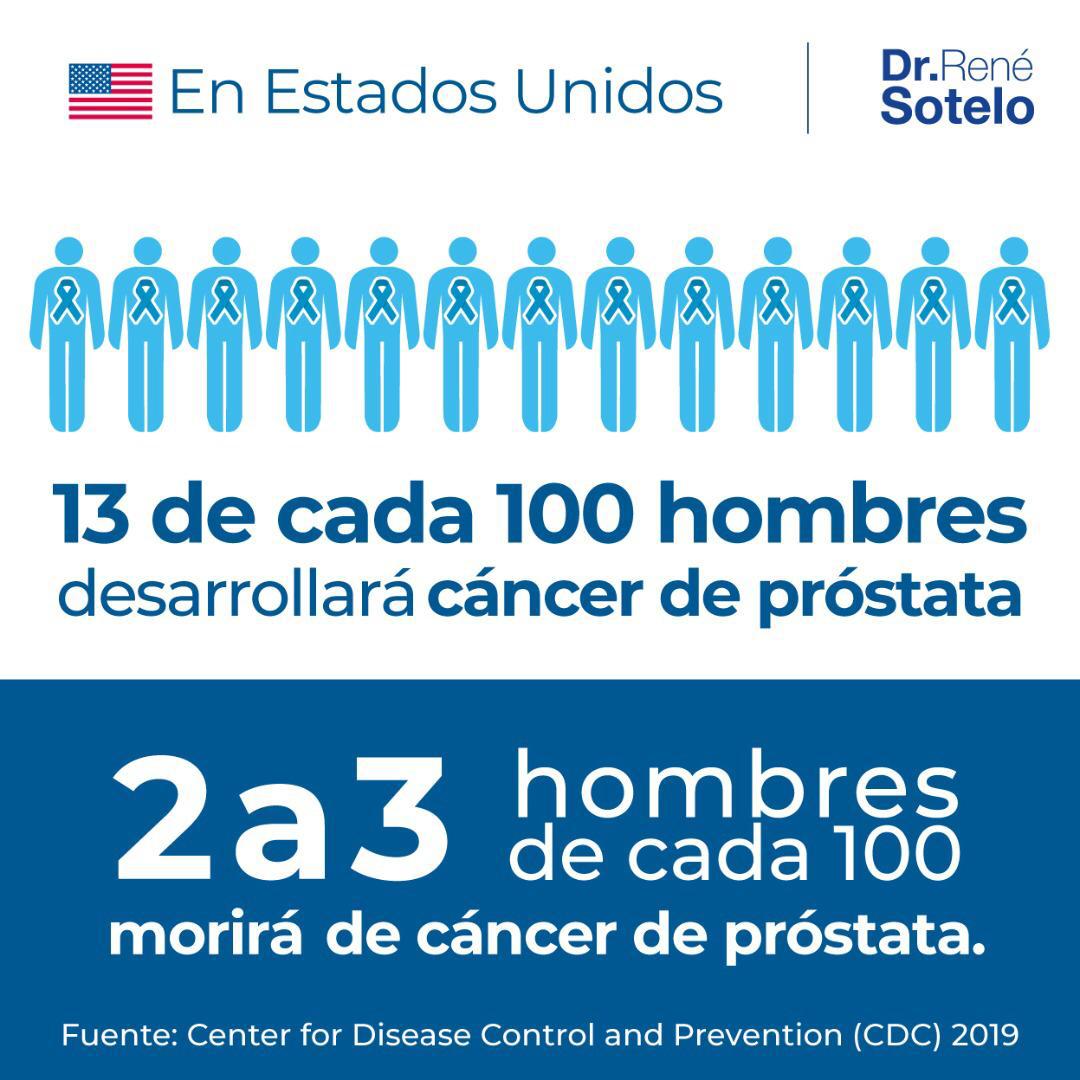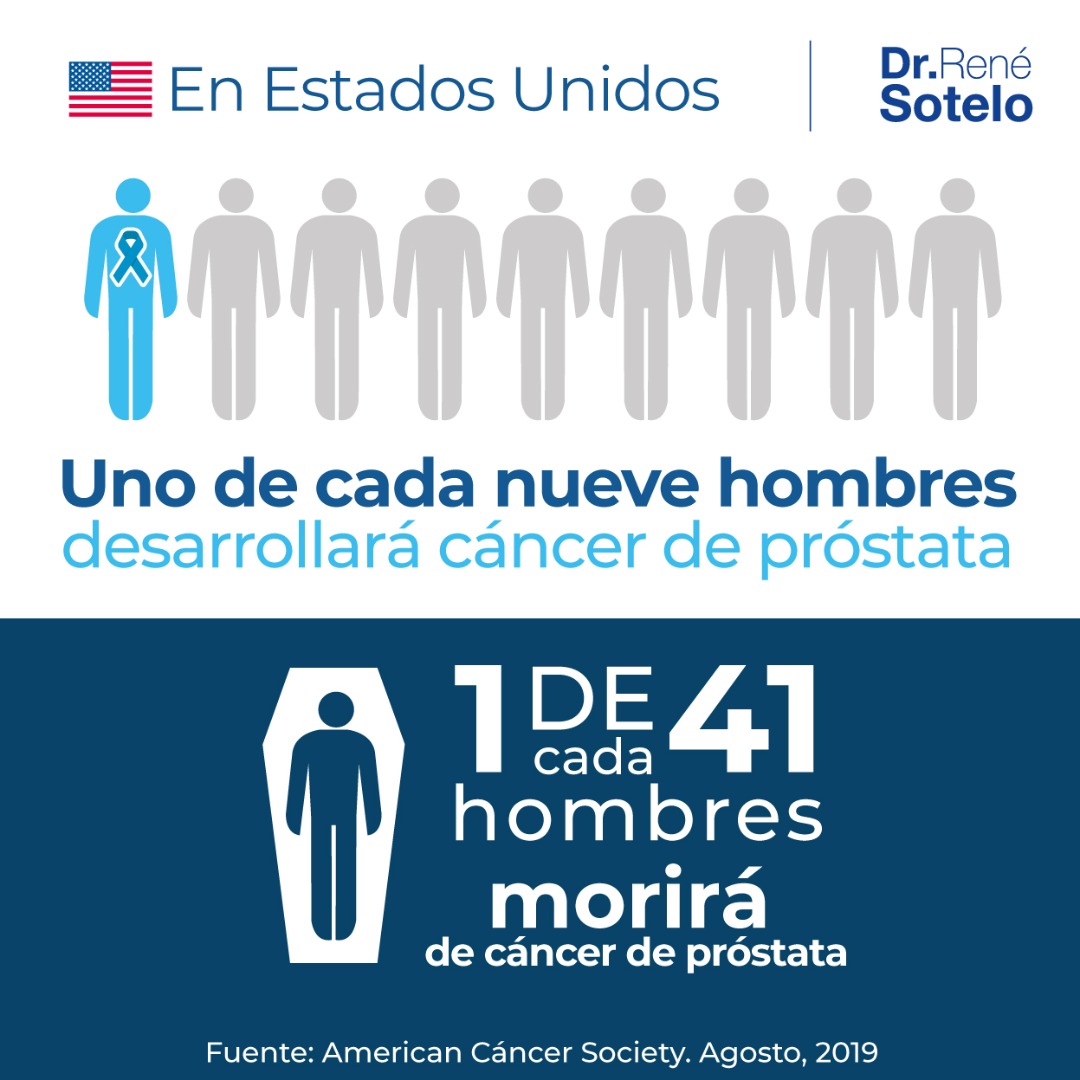Prostate Cancer
What is it?
It is the presence of cancerous cells in the prostate gland. As in the rest of the organs, when cancer develops in the prostate, the cancerous cells begin to multiply in an uncontrolled manner, so much so that, over time, they can spread from the prostate to other regions of the body, especially to the bones and lymph nodes near the gland.
Incidence

Most of the times, prostate cancer is silent. It manifests itself after having migrated from the prostate to the bones or has grown locally and invaded the urethra, making it difficult to urinate.
This cancer is the most common one diagnosed in men in the USA (13%), according to the Center for Disease Control and Prevention (CDC). It is the second leading cause of death in men in the USA, and the first cause of cancer in men in Venezuela.
In many cases, embarrassment and “fear of the finger” are the main reasons for avoiding a visit to the urologist. Early detection, however, will favor its treatment and reduce morbidity and mortality.
Every man over 50 years of age should have a digital prostate exam to detect if there is any “hardened” or abnormal area, together with a blood test to determine the level of prostate specific antigen (PSA), a protein produced in the prostate, which comes out of it and enters the blood when the tissue is inflamed, or when there is benign growth or even cancer. If there is a high presence of this antigen, it is suspected that it may not simply correspond to a benign growth and that there is a possibility for cancer. If there is a family history of prostate cancer (or even breast cancer), the examination should be done at the age of 40.
The normal PSA levels in men under 50 years of age should be less than one (ng/ml), between 50 and 60 years less than 0.9 (ng/ml), between 60 and 70 years less than 1.2 (ng/ml) and, in men over 70 years, 1.5 (ng/ml).
Risk factors: age, family history (if there is any, disease is twice as likely), smoking, obesity, predisposing conditions and race (African-American).
When prostate cancer is suspected, a biopsy should be performed to determine the degree of aggressiveness of the tumor or Gleason score (six to ten). The higher the grade, the more serious the disease. It is now known that most prostate cancers are not perceived by normal ultrasound.
A mapping of the prostate is done, and several punctures are made on each side of the prostate to identify where the disease is, but it can happen that the needle does not find its focus. It is, in a way, a “blind” biopsy. Because of this, nowadays, magnetic resonance imaging of the prostate is performed to more accurately identify suspicious foci of aggressive cancer, and then the biopsy can be performed more effectively.


There are five types of treatment, based on the aggressiveness of the tumor and factors associated with the patient’s age and morbidity:
1) Active surveillance of the patient in low-risk cases.
2) Radiotherapy.
3) Surgery for the removal of the prostate. Once removed, it is anastomosed or “tied” to the urethra, fully terminating the disease, even if this implies the elimination of the nerves responsible for erection. The expectation after surgery is the eradication of the cancer, urinary continence, and recovery of sexual function, which can be reestablished in time or managed through alternative routes.
4) Cryotherapy to freeze and eliminate prostate cancer cells.
5) High intensity focused ultrasound (HIFU), which destroys diseased cells.
The pathology report following surgery provides key information for disease prognosis and further treatment by identifying whether the disease is within the prostate or on its surface.
Treatment
Prostate cancer prevention


Current information on risk factors for prostate cancer suggests that some cases can be prevented. One possible risk factor that can be modified is diet. The risk of prostate cancer can be decreased by eating a diet low in fat and rich in vegetables, fruits, and whole grains.
The American Cancer Society recommends eating a variety of healthy foods, emphasizing plant-based foods, and limiting consumption of red meat. They also advise daily consumption of fruit, fiber, bread, cereals, and rice. These nutritional suggestions also serve to reduce the risk of other types of cancer. Tomatoes, citrus fruits, and sweet potatoes are rich in lycopenes. These vitamin-like substances are antioxidants that can help prevent DNA mutations and, therefore, reduce the chance of prostate cancer.
The preventive effects of vitamin E and selenium have been studied. Several studies associate a daily intake of non-steroidal anti-inflammatory drugs, such as aspirin®, with a lower incidence of prostate cancer in men over 60 years of age or older. It should be noted that the exact cause of prostate cancer is unknown, and that there are risk factors such as age, race or family history that cannot be controlled.



